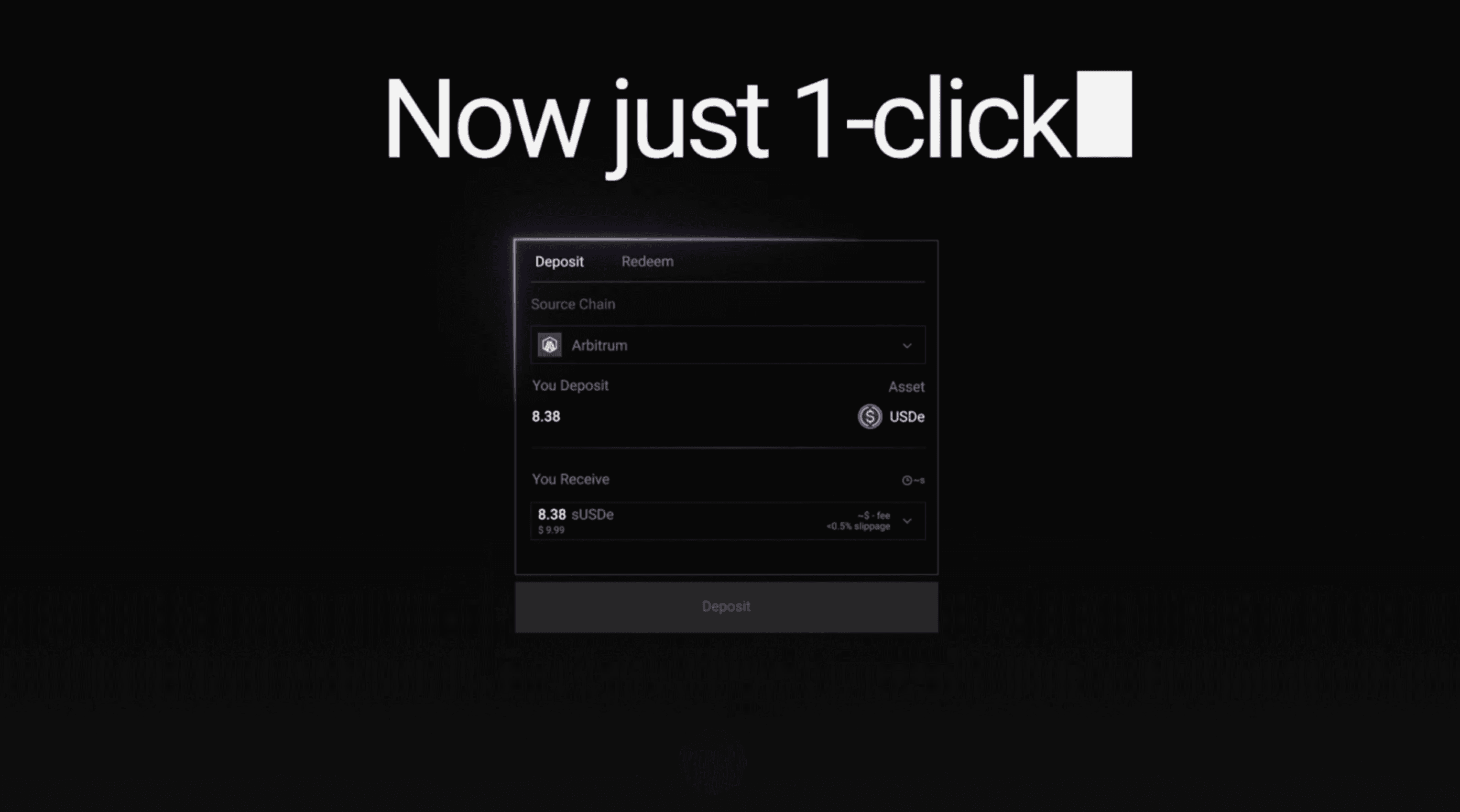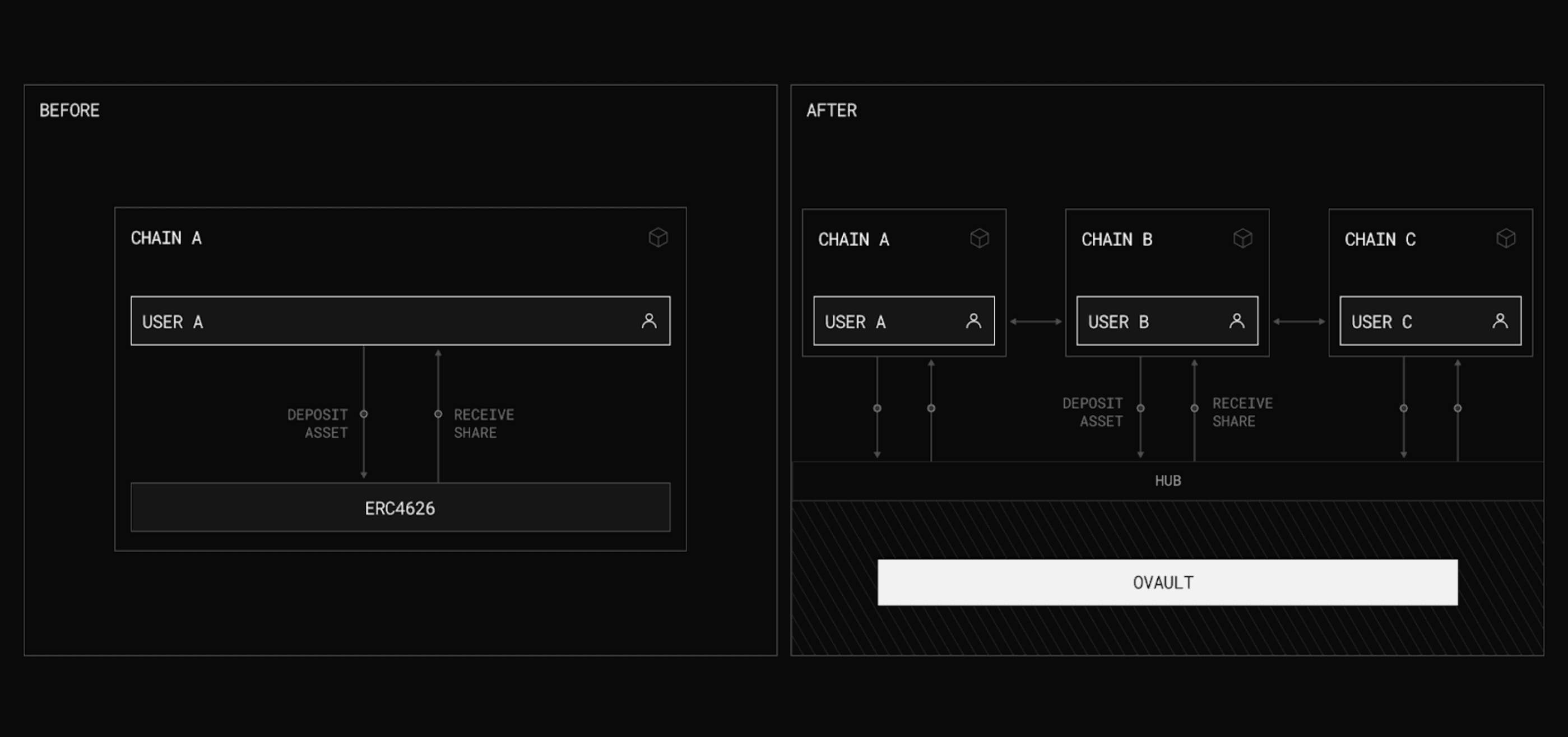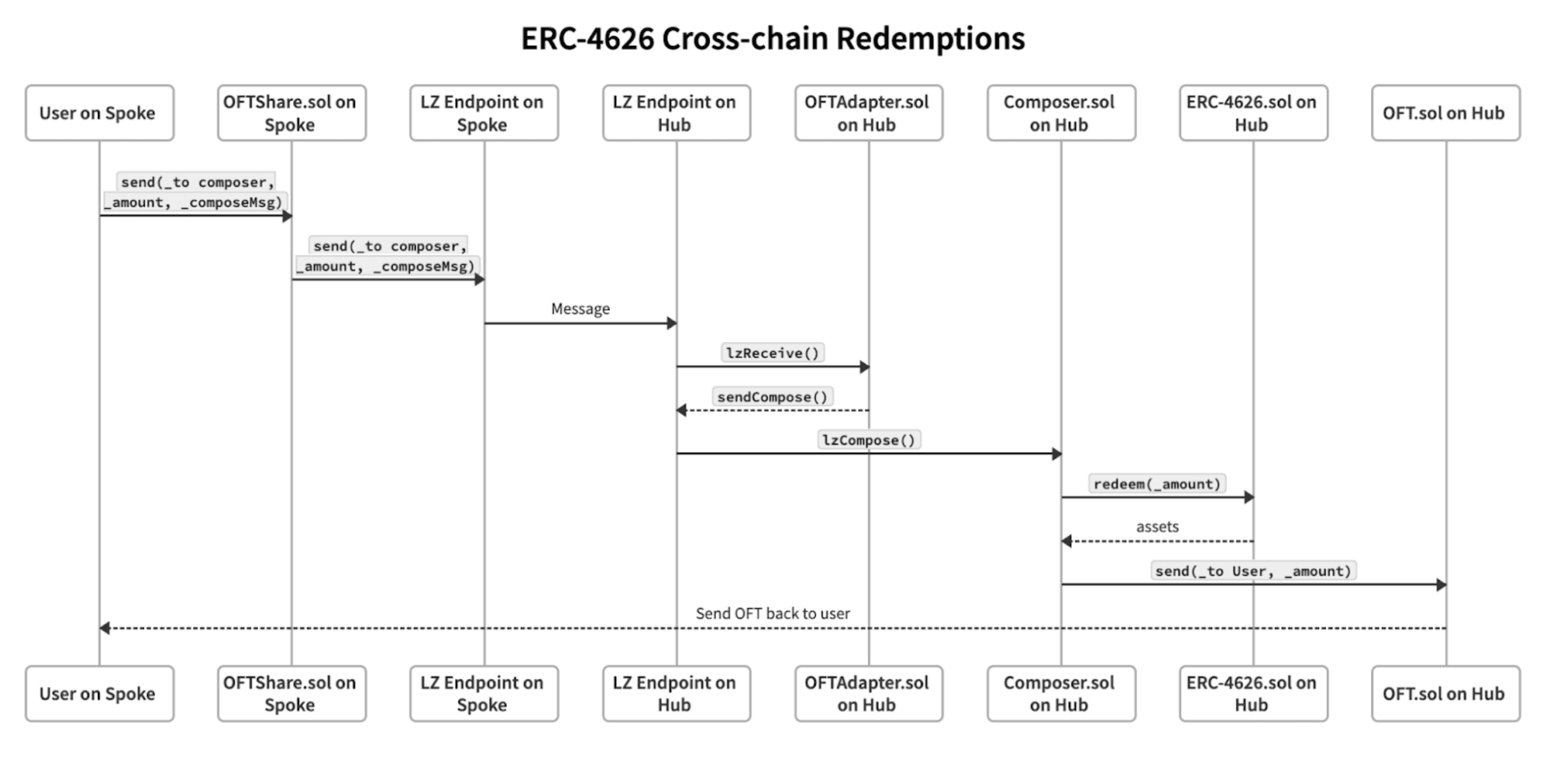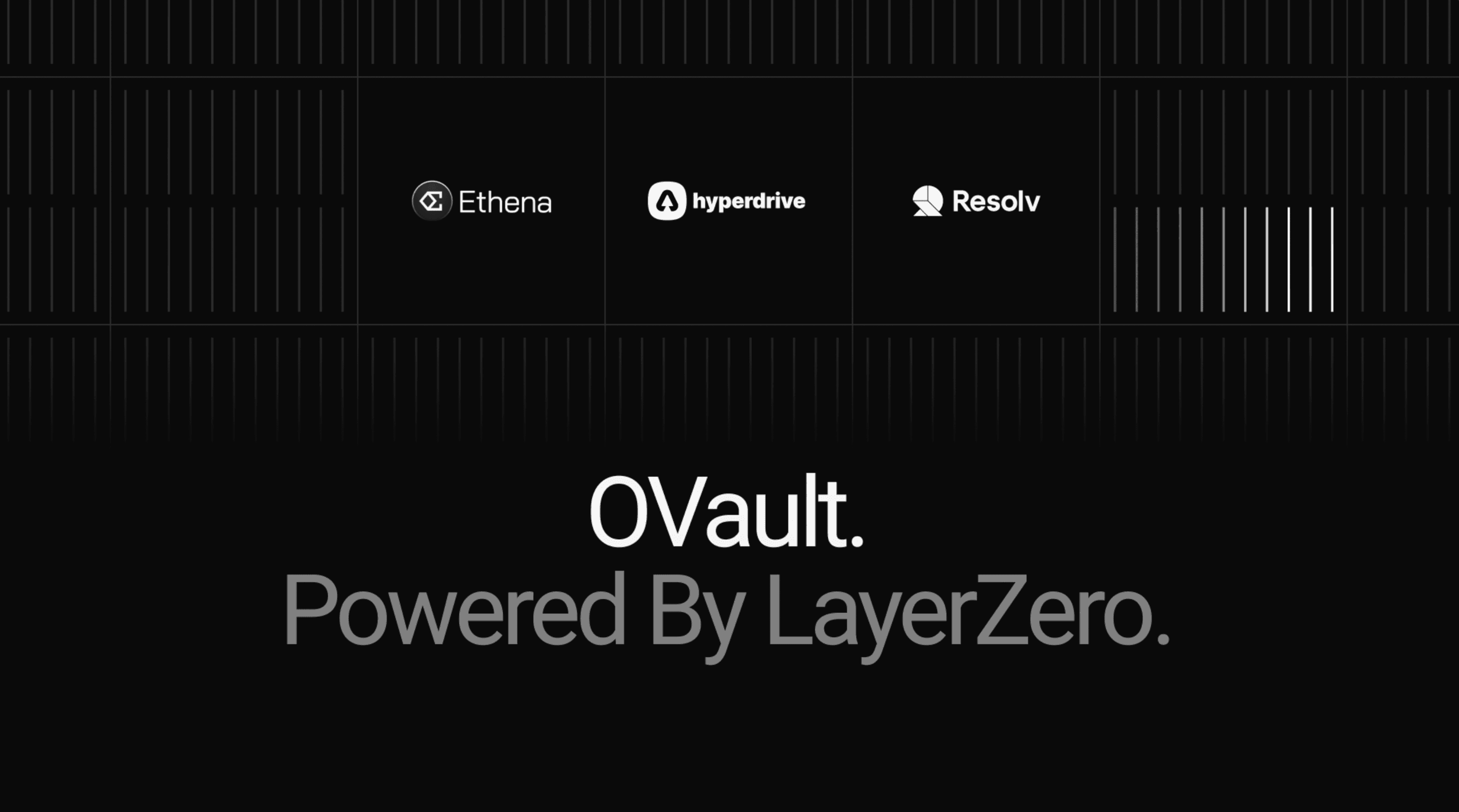Introducing OVault: Any Vault, Accessible Everywhere

A vault is a smart contract that accepts deposits and issues receipt tokens – a vertical in DeFi currently securing $110B.
OVault enables any vault contract to accept deposits from any blockchain and process withdrawals to any destination in a single click. Vault shares become universally transferable across networks via LayerZero
The practical implications are immediate: vault creators can now capture the full market opportunity across all chains rather than being artificially constrained by network boundaries. A successful yield strategy can scale to match actual user demand rather than being limited by the liquidity or user base of any single chain. Development resources that were previously split across multiple chain deployments can now focus on core strategy optimization and user experience improvements.

OVault Makes Vaults Accessible Everywhere
The Problem: The current reality for vaults is a walled garden experience.
Users today operate across multiple blockchains: Ethereum, Solana, Arbitrum, Hyperliquid, and hundreds more. But most vaults? They are stuck on one chain, limiting the number of users who can deposit, along with constraining utility of share tokens.
The entire flow is broken for single-chain vaults..
- Poor user experience: Users must bridge assets, swap tokens, and hold multiple gas tokens just to deposit
- Fragmented liquidity: Vaults can only capture deposits from one blockchain's users
- Limited utility: Vault shares can't be used in DeFi protocols on other chains
- Stunted growth: TVL and users is artificially capped by single-chain deposit and withdrawal flows
This creates a downward spiral for usage: if users can’t deposit or withdraw seamlessly, vault TVL is at risk. And if share tokens cannot be transferred across chains, yield-bearing tokens lose utility, limiting user adoption and likely capping TVL growth over time.
The Solution: OVault makes vaults borderless and accessible from anywhere.
With OVault, Developers now have a contract standard for accepting deposits from any chain and processing redemptions to any chain, while keeping users' deposit shares productive and transferable throughout the entire crypto ecosystem.
- Deposit from anywhere
- Redeem from anywhere
- Transfer share tokens everywhere
Users pay gas once on their source chain, and everything else happens seamlessly behind the scenes: no bridging, no swapping, no multiple transactions, no managing gas tokens across different networks. It is simple:
Just one click to deposit, and one click to withdraw to any destination chain. This should create a flywheel effect: easier deposit experiences lead to more TVL, which leads to more adoption of share tokens in other applications.

TRANSACTION WORKFLOW
OVault operates on a hub-and-spoke model where the core vault strategy remains on a designated hub chain, while Share OFTs enable seamless interaction from any LayerZero-connected spoke chain.
Let’s dive into how it works.

- Universal Deposits: Users deposit from any blockchain enabled by the vault provider, which forwards the request via LayerZero to a composer on the hub chain. The composer deposits into the underlying ERC-4626 vault, mints Share OFTs, and sends them back to the user's original chain.
- Flexible Redemptions: Users can redeem from any chain supported by the vault provider in a single transaction. In the background, LayerZero orchestrates the withdrawal by sending Share OFTs to the composer, which returns assets to the user's origin chain.
- Interoperable Shares: OVault Share Tokens are OFTs. Users can transfer them, use them as collateral, or integrate with DeFi protocols on any blockchain supported by the vault provider.
- Backwards Compatibility: Existing ERC-4626 contracts (and soon other vaults) can become omnichain without changing core contract logic. Vault developers can deploy an OVault wrapper around their existing strategy, while maintaining full compatibility with their current integrations.
OVault is a $110B Solution for DeFi and a $3.25T Solution for TradFi
OVault is live and secures $9B in deposited assets across three day one launch partners: Ethena, Resolv, and Hyperdrive.

- Ethena leverages OVault to enable the minting of its $5.6B asset sUSDe, allowing them to maintain the underlying vault and yield characteristics of their infrastructure while broadening access to their synthetic dollar protocol to 18 new blockchains.
- Hyperdrive integrates OVault to create a global money market, enabling users to supply USDT0 and USDe from any chain while accessing yield-bearing vaults on HyperEVM that previously required single-chain interactions.
- Resolv uses OVault to power decentralized dollar infrastructure, allowing seamless minting and redemption across chains while preserving the stability and yield mechanisms that power their protocol. Users can mint their yield-bearing stablecoin wstUSR from any chain while Resolv maintains unified collateral management and risk parameters.
Overall, ERC-4626 vaults represent around $10 billion in TVL today. With Ethena as a launch partner, more than 90% of that market will adopt OVault on day one.
But the model is broader than ERC-4626. Vaults – including lending and staking pools – underpin money markets, staking, yield-bearing tokens, and even DEX liquidity for DeFi, as all of these contracts essentially take deposits and issue receipt tokens. Together, these categories represent a total addressable market of roughly $110 billion of DeFi TVL, according to DeFi Llama.
The scope, however, is not limited to crypto rails. Just as stablecoins are bringing dollars into open, programmable money systems, OVault defines how yield-bearing accounts will function in the context of permissionless global markets. If an asset is deposited into an account and a receipt asset is issued, it is possible to account for this action via OVault.
This means that the OVault has the potential to extend to the trillions of dollars deposited into traditional markets. For example, time deposits (also known as a term deposit or certificate of deposit) currently hold $2.35T by allowing users to lock dollars for a fixed period and earn a predetermined interest rate.
Conclusion
OVaults represent an architectural evolution in vault design, built natively for the many chains reality.
Rather than treating cross-chain functionality as a secondary consideration, OVaults embed interoperability as a core design principle. This creates new possibilities for capital allocation, risk management, and market expansion that simply weren't possible with traditional single-chain vaults.
Yield farming becomes chain-agnostic. Collateral becomes universally accessible. Capital efficiency approaches theoretical maximums.
For developers ready to integrate OVaults, documentation and deployment tools are available here. The architecture supports both fresh vault deployments and retrofitting existing ERC-4626 implementations with omnichain functionality.